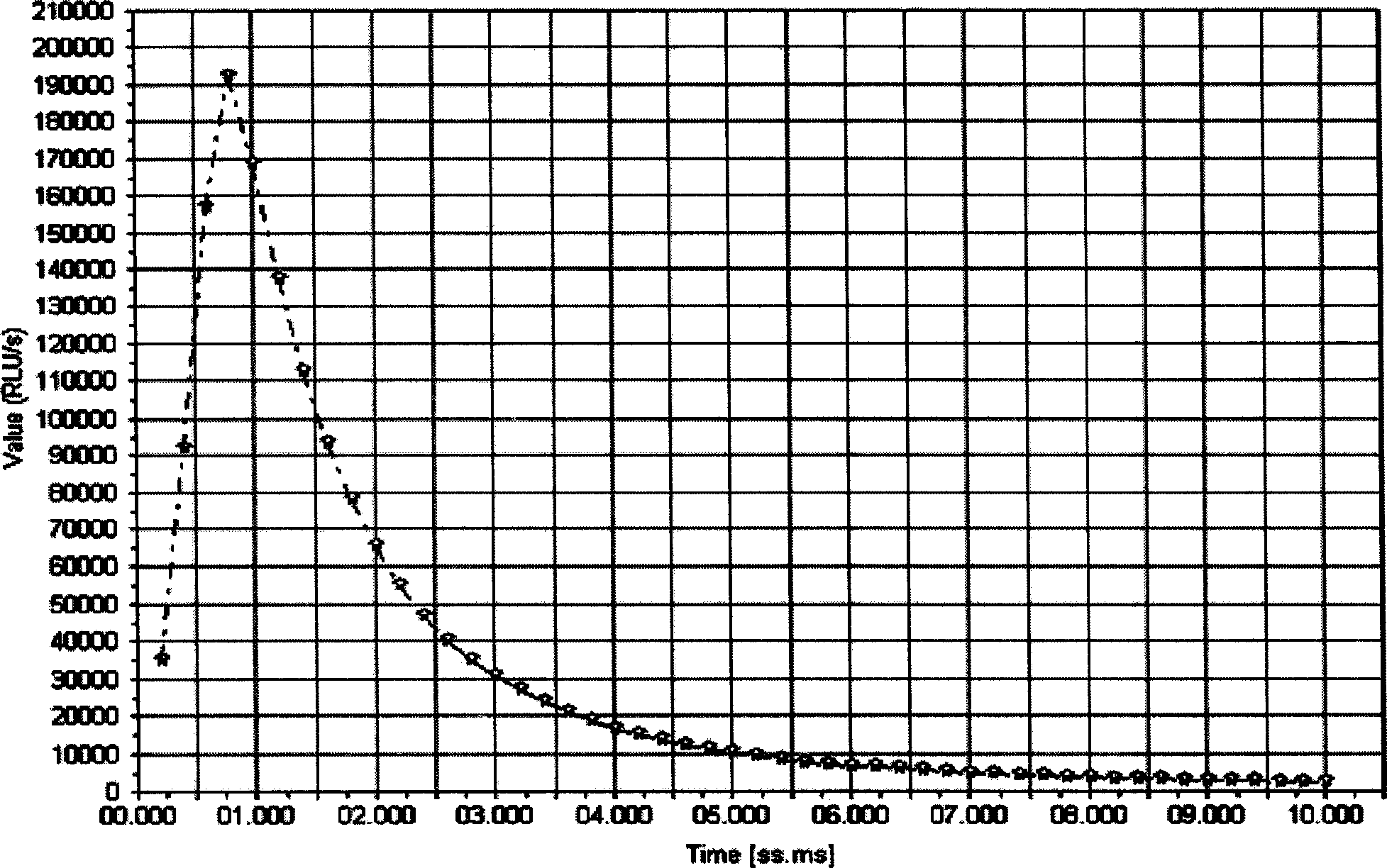Chemiluminescence detection kit based on corpuscle
A chemiluminescence detection and microparticle technology, which is applied in the field of biomedical detection, can solve the problems of long reaction time, low reaction efficiency, and inability to obtain stable results, so as to improve the chances of capture, shorten the reaction time, and improve the speed.
- Summary
- Abstract
- Description
- Claims
- Application Information
AI Technical Summary
Problems solved by technology
Method used
Image
Examples
Embodiment 1
[0025] Example 1. Microparticle-based carcinoembryonic antigen (CEA) chemiluminescence detection kit
[0026] The microparticle-based carcinoembryonic antigen (CEA) chemiluminescence detection kit includes: anti-CEA monoclonal antibody magnetic beads, acridinium ester-labeled anti-CEA antibody, CEA standards, washing solution, and luminescent solution. The luminescent liquid includes liquid A and liquid B. Liquid A is an aqueous solution of hydrogen peroxide and nitric acid, the mass concentration of hydrogen peroxide is 0.5%, and the molar concentration of nitric acid is 0.1M; liquid B is sodium hydroxide and Triton X-100 aqueous solution , The molar concentration of sodium hydroxide is 0.35M, and the volume percentage of Triton X-100 is 0.5%.
[0027] Among them, the anti-CEA monoclonal antibody magnetic beads are formed by connecting the anti-CEA monoclonal antibody with a cyclohexylcarbodiimide cross-linking agent to a magnetic bead containing a -COOH group and a particle size...
Embodiment 2
[0031] Example 2. Triiodothyronine (T3) chemiluminescence detection kit based on microparticles
[0032] The microparticle-based triiodothyronine (T3) chemiluminescence detection kit includes: anti-T3 monoclonal antibody magnetic beads, acridinium ester labeled T3 antigen, T3 standard, washing solution, luminescent solution. The luminescent liquid includes liquid A and liquid B. Liquid A is an aqueous solution of hydrogen peroxide and nitric acid, the mass concentration of hydrogen peroxide is 0.5%, and the molar concentration of nitric acid is 0.1M; liquid B is sodium hydroxide and Triton X-100 aqueous solution , The molar concentration of sodium hydroxide is 0.35M, and the volume percentage of Triton X-100 is 0.5%.
[0033] Among them, the anti-T3 monoclonal antibody magnetic beads are formed by connecting the anti-T3 monoclonal antibody with a cyclohexylcarbodiimide cross-linking agent to a magnetic bead containing a -COOH group and a particle size of 2.3um.
[0034] The T3 ant...
PUM
 Login to View More
Login to View More Abstract
Description
Claims
Application Information
 Login to View More
Login to View More - R&D
- Intellectual Property
- Life Sciences
- Materials
- Tech Scout
- Unparalleled Data Quality
- Higher Quality Content
- 60% Fewer Hallucinations
Browse by: Latest US Patents, China's latest patents, Technical Efficacy Thesaurus, Application Domain, Technology Topic, Popular Technical Reports.
© 2025 PatSnap. All rights reserved.Legal|Privacy policy|Modern Slavery Act Transparency Statement|Sitemap|About US| Contact US: help@patsnap.com



